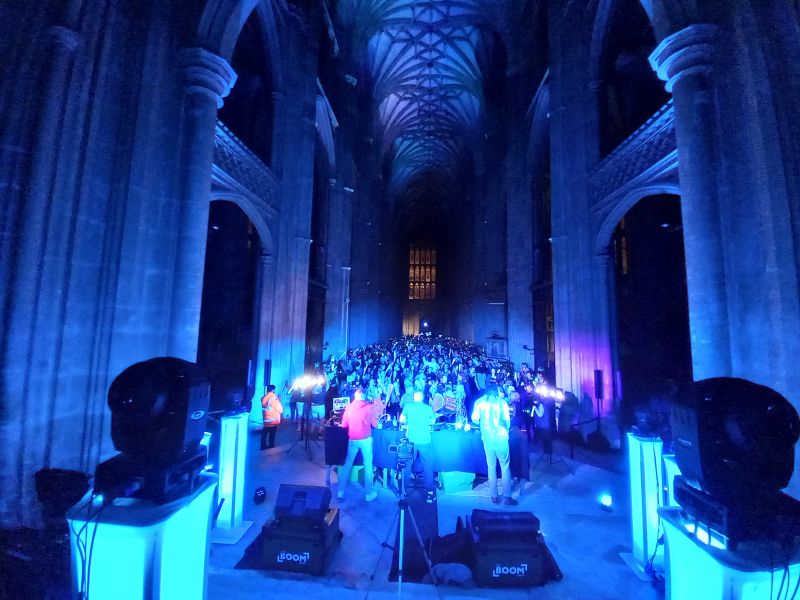
Controversy at Canterbury Cathedral: Silent Discos in Sacred Spaces

A unique event at one of the UK's oldest cathedrals has sparked debate and divided opinions. Delve into the clash between tradition and modernity as Canterbury Cathedral hosts 90s-themed silent discos, drawing both praise and criticism from different quarters.
The Clash of Tradition and Modernity
Canterbury Cathedral, a historical landmark dating back to 597 CE, found itself at the center of a heated debate as it opened its doors to a new kind of event: 90s-themed silent discos. The cathedral, known for its rich religious significance as the seat of the Archbishop of Canterbury, witnessed a colorful spectacle as revelers immersed themselves in a night of music and dance.
The first disco took place on Thursday evening.
Bathed in vibrant hues and pulsating with the beats of 90s music, the cathedral's halls echoed with the energy of hundreds of attendees clad in glow sticks and headphones. The juxtaposition of ancient stone walls and modern-day disco vibes created a surreal atmosphere that captivated the participants and stirred up conflicting sentiments among onlookers.
While some hailed the event as a refreshing departure from tradition, embracing the cathedral's role as a community hub beyond religious ceremonies, others raised objections, arguing that such festivities had no place within the sacred confines of a cathedral. The clash between tradition and modernity, reverence and revelry, set the stage for a compelling discourse on the evolving dynamics of sacred spaces in contemporary society.
The Cathedral's Response and Public Reaction
In the aftermath of the inaugural silent disco, Canterbury Cathedral's social media channels buzzed with excitement over the 'fantastic atmosphere' that had been created within its ancient walls. The overwhelming demand for tickets, which sold out within hours, signaled a strong endorsement from the public for such unconventional events in a traditional setting.
The Dean of Canterbury, Very Reverend Dr. David Monteith, sought to address the concerns raised by critics, emphasizing that the disco was not a 'rave in the nave' but a carefully curated event designed to be both appropriate and respectful of the cathedral's sanctity. Despite these reassurances, Christian protesters gathered outside the cathedral, voicing their opposition to what they viewed as a desecration of a sacred space.
Simultaneously, a petition calling for the halt of the disco garnered significant support, with over 1,700 signatures urging Archbishop Justin Welby to intervene and preserve the cathedral's sanctity. The clash between traditionalists advocating for reverence and modernists advocating for inclusivity underscored the complex interplay of heritage and innovation within the cathedral's hallowed halls.
Embracing Diversity in Sacred Spaces
As the controversy surrounding the silent discos unfolded, the organizers defended their vision of fostering inclusivity and community engagement within sacred spaces. Silent Discos in Incredible Places, the masterminds behind the event, highlighted their track record of hosting similar gatherings in other British cathedrals, emphasizing the positive impact of bringing diverse audiences together in unique settings.
The clash between tradition and modernity, reverence and revelry, set the stage for a compelling discourse on the evolving dynamics of sacred spaces in contemporary society.
The clash between tradition and modernity, reverence and revelry, set the stage for a compelling discourse on the evolving dynamics of sacred spaces in contemporary society.







